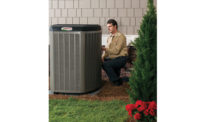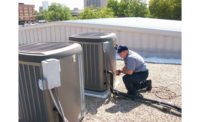Governor Andrew M. Cuomo recently announced that new regulations have been finalized to significantly reduce the use of HFCs in New York State. The Department of Environmental Conservation (DEC) regulations, which were finalized in late September, will adopt Rules 20 and 21 from the Environmental Protection Agency’s (EPA’s) Significant New Alternatives Policy (SNAP) program.
"With these nation-leading actions, New York will help drive manufacturers to adopt better, cleaner products, and pioneer clean energy solutions that not only protect our health and our precious natural resources, but also grow our economy,” said Governor Cuomo.
The new regulations will ban the sale, installation, and commercial use of certain HFC refrigerants in new or retrofitted food refrigeration equipment, large air conditioning equipment (chillers), and vending machines, as well as prohibit substances used as aerosol propellants and foam-blowing agents in new consumer products. The prohibitions will take place over the next four years and are expected to reduce HFC emissions by more than 20 percent of projected levels by 2030, or a cumulative total of 17 million metric tons of carbon dioxide equivalent emissions.
The DEC developed the regulations in collaboration with partner states in the U.S. Climate Alliance, which has grown to include 25 governors. New York joins California and Colorado in finalizing regulations and about a dozen other states that have adopted laws or announced their intention to backstop the EPA program and require the reduction of HFCs.
The formal Notice of Adoption is being filed with the Department of State and is anticipated to appear in the October 14, 2020 State Register. The rule will be effective 30 days after filing.
New Initiative
The State's recently adopted regulations complement a new $3 million initiative -- New York State Energy Research and Development Authority's (NYSERDA’s) Next Generation HVAC Innovation Challenge -- to develop new HVAC systems for buildings. The actions also support the implementation of the State's Climate Leadership and Community Protection Act, which put New York on the path to reducing greenhouse gas emissions 40 percent by 2030, as well as achieving its mandated goal of a zero emissions electricity sector by 2040 and 70 percent renewable energy generation by 2030.
As part of NYSERDA's multi-round Next Generation Innovation Challenge, the $3 million available funding will be used to spur development and adoption of new refrigerants that have a less damaging effect on the environment than their current counterparts. The Challenge supports clean energy companies that want to develop, commercialize, and demonstrate new technologies that improve the performance of advanced HVAC systems and create new economically viable opportunities for energy efficiency in buildings. This funding will be offered through a competitive solicitation process to develop advanced refrigerant monitoring and leak detection solutions, new compressor technologies, in-field leak repair solutions, demonstration and evaluation of emerging technologies, refrigerant capture and recycling, industry collaboration on training, market awareness and product requirements, and overall development of low-GWP refrigerants. While low-GWP refrigerant options exist, their flammability, toxicity, or performance have prevented them from being widely adopted, leaving a gap in the services and technology to bring these alternatives to scale.
“The lack of widespread availability for environmentally friendly refrigerants presents a significant and impactful gap in the market that must be addressed in order to win the fight on climate change,” said Doreen Harris, acting president and CEO of NYSERDA. "The Next Generation HVAC Challenge is about changing the market as we seek to limit HFCs in our environment and the way we think about cooling and heating our buildings, which will allow us to make significant progress towards Governor Cuomo's ambitious climate goals."
Applications for the Challenge are due on November 17, 2020, with awards anticipated in the first quarter of 2021.
Want more HVAC industry news and information? Join The NEWS on Facebook, Twitter, and LinkedIn today!







